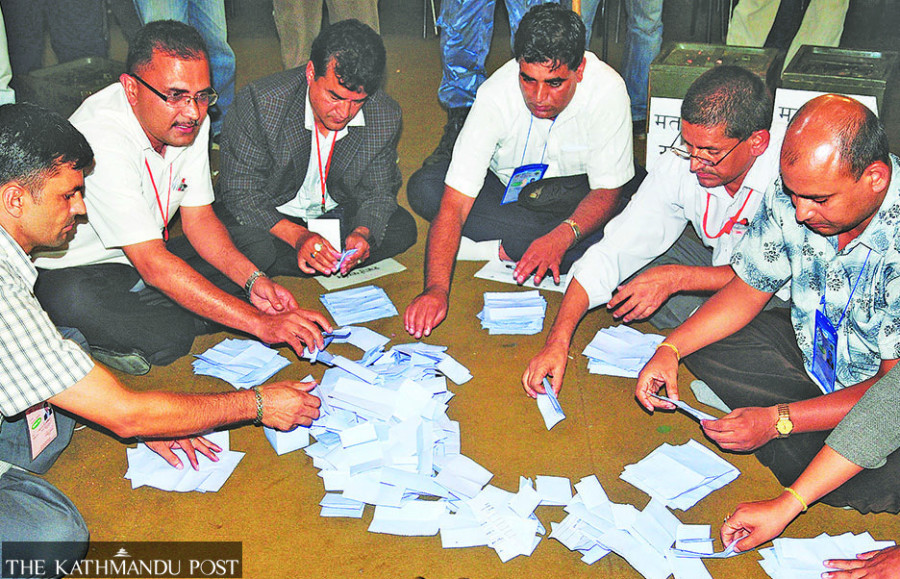National
Poll commission plans video tracking of ballot counting
Election officials says local governments should purchase and install the system.
Prithvi Man Shrestha
A group of cadres of the CPN (Maoist Centre) stormed the vote counting centre in Bharatpur tearing ballot papers on May 28, 2017 as the counting process was in the final phase.
When the incident happened, votes secured by two mayoral candidates for the Bharatpur Metropolitan City—Renu Dahal, candidate from Maoist Centre and Devi Prasad Gyawali from the CPN-UML–were neck and neck.
Gyawali was leading the race by 733 votes. The incident forced the Election Commission to conduct re-elections in the following August 4 at ward number 19 and Dahal emerged winner in the race.
In order to discourage similar incidents, the Election Commision will conduct online monitoring of the ballot paper storage and vote counting process from its headquarters in Kathmandu.
For this, it has decided to use Vote Counting Video Management System at vote counting centres and storage centres. The election body has also directed the local governments to purchase such a system and maintain internet connectivity with the commission’s headquarters.
Kamal Prasad Bhattarai, under secretary at the commission said that the election body decided to employ the system to discourage attempts at tampering with ballot papers and disrupting the vote counting process.
“There will be a video recording of activities taking place at vote counting centres which will help find the guilty if any unwanted activities take place there,” he said.
As per Section 7 of the Election Commission Act-2017, the commission can take support of the federal, provincial and local governments as well as offices under them for the purpose of conducting elections.
As per section 8 of the act, they must support the commission as per its request. Likewise, the commission can also use physical infrastructure including land, buildings, vehicles, furniture and other physical goods of the federal, provincial and local governments for holding the elections.
Instead of providing funds to local governments, the commission has instructed them to arrange the system using their own resources, according to Bhattarai.
There are 753 local governments and all of them are supposed to purchase and install the Vote Counting Video Management System. The commission has also laid down specifications for the local governments to buy the system.
“Introducing a video monitoring system at vote counting locations is a good initiative as it will help generate evidence if any untoward incident takes place in the vote counting area,” said Pradip Pokharel, chairperson of the Election Observation Committee Nepal. “But, it will also help the commission to produce evidence to defend its action regarding any untoward incident at the vote counting location.”
After the Bharatpur incident, the commission had decided to conduct re-election at ward 19 of Bharatpur Metropolitan City. The election body’s decision was challenged at the Supreme Court arguing the decision to hold re-elections in such incidents would encourage the tendency among parties to disrupt vote counting and tear ballot papers after sensing defeat of their candidates. After the Bharatpur incident, the commission had installed wire mesh around the vote counting locations to prevent unauthorised people from entering. “Besides arranging a video monitoring system, it is necessary to ensure that no unpleasant incident takes place at vote counting centres,” said Pokharel.




 19.12°C Kathmandu
19.12°C Kathmandu

%20(1).jpg&w=200&height=120)













